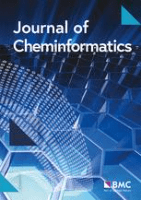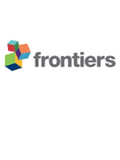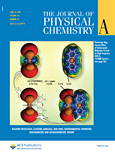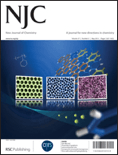
JOURNAL OF MOLECULAR MODELING
Scope & Guideline
Pioneering Research in Molecular Modeling and Beyond
Introduction
Aims and Scopes
- Computational Chemistry and Molecular Dynamics:
The journal emphasizes the use of computational chemistry methods, including density functional theory (DFT), molecular dynamics (MD) simulations, and quantum mechanical calculations to investigate the structural, electronic, and optical properties of various molecular systems. - Material Science and Nanotechnology:
Research articles often explore the properties and applications of novel materials, particularly in the fields of nanotechnology and materials science, including the development of nanomaterials for drug delivery, sensors, and energy applications. - Biological and Medicinal Chemistry:
There is a strong focus on the application of molecular modeling in biological systems, including drug discovery, enzyme interactions, and the design of therapeutic agents targeting diseases such as cancer and viral infections. - Environmental Chemistry and Green Chemistry:
The journal publishes studies related to environmental applications of molecular modeling, such as pollutant interactions, adsorption processes, and the development of sustainable materials and processes. - Intermolecular Interactions and Supramolecular Chemistry:
Research on the understanding of intermolecular forces and their implications in supramolecular chemistry is prevalent, with studies investigating hydrogen bonding, π-π interactions, and complexation phenomena.
Trending and Emerging
- Machine Learning and AI in Molecular Modeling:
There is a growing trend towards integrating machine learning and artificial intelligence techniques into molecular modeling, enhancing predictive capabilities and streamlining the design of new compounds and materials. - Multiscale Modeling Approaches:
Emerging emphasis on multiscale modeling techniques that combine molecular dynamics, quantum mechanics, and continuum mechanics to address complex systems and phenomena, such as material properties and biological processes. - Sustainable and Green Chemistry Applications:
Research focusing on sustainable practices and green chemistry, including the development of environmentally friendly materials and processes, is gaining traction, reflecting a global push towards sustainability. - Drug Design and Virtual Screening:
An increase in studies employing molecular modeling for drug design and virtual screening, particularly in the context of COVID-19 and other infectious diseases, highlights the journal's relevance in medicinal chemistry. - Advanced Material Design for Energy Applications:
The journal is seeing a rise in publications centered on the design and characterization of advanced materials for energy applications, such as batteries, supercapacitors, and solar cells, driven by the need for sustainable energy solutions.
Declining or Waning
- Classical Force Field Simulations:
There has been a noticeable decline in articles focusing solely on classical force field simulations, as researchers increasingly favor more accurate quantum mechanical methods that provide deeper insights into molecular interactions. - Non-DFT Quantum Chemical Methods:
Publications utilizing older or less popular quantum chemical methods, such as Hartree-Fock or semi-empirical approaches, have decreased as DFT and its derivatives become the dominant computational techniques for molecular modeling. - General Reviews on Molecular Modeling:
The journal has seen a reduction in general review articles that cover broad topics in molecular modeling, as the community seems to prefer more specialized, in-depth studies that contribute new findings or methodologies. - Static Structural Studies:
Research focused solely on static structural studies without dynamic considerations is becoming less common, as the field shifts towards understanding dynamic processes and their implications in real-world applications.
Similar Journals

JOURNAL OF THE INDIAN CHEMICAL SOCIETY
Bridging Academia and Industry in the Chemical RealmJournal of the Indian Chemical Society, published by Elsevier, stands as a cornerstone in the field of chemistry, particularly representing the rich chemical research emanating from India.
With a significant history dating back to its establishment, this journal encompasses diverse disciplines including Drug Discovery, Electrochemistry, Inorganic Chemistry, Organic Chemistry, and Physical and Theoretical Chemistry, reflecting the evolving landscape of chemical sciences.
Despite being positioned in the Q3 category across multiple quarters, the journal demonstrates promising rankings in various chemistries, highlighting its commitment to advancing the knowledge and application of chemical sciences. While currently not available as an open access journal, the Journal of the Indian Chemical Society is dedicated to providing a platform for high-quality research that fosters innovation and collaboration among researchers, professionals, and students worldwide.
With its continuous publication from 1973 to the present, it serves as an essential repository for cutting-edge findings and developments in chemistry, striving to connect academia with industry and practice.

THEORETICAL CHEMISTRY ACCOUNTS
Advancing the Frontiers of Theoretical ChemistryTHEORETICAL CHEMISTRY ACCOUNTS is a prestigious journal dedicated to promoting the advancement of theoretical and computational chemistry. Published by Springer, this journal has become a vital resource for researchers, professionals, and students seeking to explore innovative theoretical approaches in chemistry since its inception in 1996. With a current impact factor positioning it in the Q3 category of Physical and Theoretical Chemistry, it underscores its importance in the academic landscape, ranking 113 out of 189 in its field according to Scopus. The journal embraces an Open Access model, making cutting-edge research widely accessible to the global community. Researchers are encouraged to submit their latest findings and theoretical advancements, contributing to the ever-expanding body of knowledge within this dynamic field. Addressing contemporary challenges and breakthroughs, THEORETICAL CHEMISTRY ACCOUNTS serves as an essential platform for dialogue and discovery among scholars dedicated to the intersection of chemistry and theory.

Journal of Cheminformatics
Connecting chemistry and computing for a brighter future.Journal of Cheminformatics, published by BMC, is a premier open-access journal that has been a cornerstone of cheminformatics research since its inception in 2009. With an ISSN of 1758-2946, this journal operates from the heart of the United Kingdom, providing a dynamic platform for disseminating high-quality, peer-reviewed articles that explore the integration of computer science with chemistry. The journal proudly stands in the prestigious Q1 category across multiple disciplines, including Computer Graphics, Computer-Aided Design, and Library and Information Sciences, showcasing its exceptional impact in the fields of cheminformatics and computational chemistry. Additionally, it ranks impressively in various Scopus categories, with notable placements such as #7 in Library and Information Sciences and #15 in Physical and Theoretical Chemistry, demonstrating its significance to the academic community. As a leader in open-access publishing, the Journal of Cheminformatics ensures that cutting-edge research and innovations are freely accessible to researchers, professionals, and students alike, fostering collaboration and advancement in this rapidly evolving field.

Moroccan Journal of Chemistry
Uniting Global Scholars for a Deeper Understanding of Chemistry.Moroccan Journal of Chemistry, published by the University Mohammed Premier Oujda, serves as a pivotal platform for researchers and professionals in the field of chemistry, particularly focusing on diverse and emerging areas within the discipline. Established in 2018, this open-access journal facilitates widespread dissemination of scholarly articles, ensuring that cutting-edge research reaches a global audience. With an ISSN of 2351-812X and categorized in the Q3 quartile for miscellaneous chemistry in 2023, the journal maintains rigorous peer-review standards while fostering an inclusive environment for scientific dialogue. Located in Morocco, it aims to bridge local and international research communities, contributing to the advancement of knowledge in chemistry. As it continues to grow, the Moroccan Journal of Chemistry remains an essential resource for students, educators, and professionals eager to stay abreast of the latest developments in the field.

Frontiers in Chemistry
Empowering Global Collaboration in Chemical Research.Frontiers in Chemistry is an esteemed and innovative Open Access journal published by FRONTIERS MEDIA SA, based in Lausanne, Switzerland. Since its inception in 2013, the journal has established itself as a leading platform for the dissemination of high-quality research across a broad spectrum of chemistry disciplines, achieving a notable Q1 classification in the miscellaneous chemistry category as of 2023. With an impressive Scopus rank, placing it at 72nd out of 408 in General Chemistry and falling within the 82nd percentile, Frontiers in Chemistry is committed to publishing significant findings that contribute to the advancement of the field. The journal's Open Access model ensures that research is freely accessible to all, fostering a greater exchange of knowledge and collaboration among researchers, professionals, and students globally. It covers a range of topics, from organic and inorganic chemistry to materials science and biochemistry, making it an essential resource for anyone seeking to stay at the forefront of chemical research.

Molecular Systems Design & Engineering
Designing Molecular Systems for Real-World ImpactMolecular Systems Design & Engineering, published by the esteemed Royal Society of Chemistry, stands at the forefront of interdisciplinary research focused on the integration of molecular systems and engineering principles. With its ISSN 2058-9689 and a robust impact within various scientific domains, this journal not only facilitates the advancement of knowledge in fields such as Biomedical Engineering, Chemical Engineering, and Materials Chemistry, but also fosters collaborative innovations that address contemporary challenges in energy and manufacturing processes. Its recent rankings, including Q1 categorization in Critical areas of Chemical Engineering and Materials Chemistry, underscore its significance and influence within the scientific community, making it a vital resource for researchers, professionals, and students alike. Access options are available to meet diverse reader needs, encouraging wider dissemination of groundbreaking findings and methodologies that enhance the design and application of molecular systems.

ACS Physical Chemistry Au
Connecting researchers to a world of open scientific dialogue.ACS Physical Chemistry Au, published by the American Chemical Society, is a pioneering open-access journal that provides a dynamic platform for researchers and professionals in the field of physical chemistry and its interdisciplinary connections. Since its inception in 2021, the journal has made significant strides in disseminating high-quality research, evidenced by its impressive standings in various categories, including Q1 rankings in Chemistry (miscellaneous), Computational Theory and Mathematics, and Physical and Theoretical Chemistry as of 2023. With a commitment to enhancing the visibility and accessibility of scholarly work, ACS Physical Chemistry Au offers a robust Open Access model, ensuring that groundbreaking research is freely available to a global audience. The journal serves as an essential resource for researchers, students, and practitioners seeking to advance knowledge in computational theory, physical chemistry, and their applied sciences. With an ISSN of N/A and an E-ISSN of 2694-2445, the journal is poised to make a lasting impact in the academic community.

BMC Chemistry
Exploring the Frontiers of Chemistry ResearchBMC Chemistry, published by BMC, is a reputable open access journal that has made significant strides since its inception in 2019. Operating under e-ISSN 2661-801X, this journal is dedicated to advancing the field of general chemistry by promoting high-quality research across various sub-disciplines. Headquartered in the United Kingdom, BMC Chemistry boasts a commendable impact factor and is classified in Q2 within the prestigious field of Chemistry (miscellaneous) according to the 2023 category quartiles. The journal's Scopus ranking places it at #139 out of 408 in its category, highlighting its growing relevance and influence in the academic community, with a commendable 66th percentile standing. With a commitment to open access, BMC Chemistry ensures that groundbreaking discoveries and innovative research are available to a global audience, fostering collaboration and development in chemistry. Researchers, professionals, and students alike will find this journal to be an invaluable resource for disseminating knowledge and driving scientific advancement.

JOURNAL OF PHYSICAL CHEMISTRY A
Connecting researchers to the latest in physical chemistry.Journal of Physical Chemistry A, published by the American Chemical Society, serves as a leading platform for disseminating high-quality research in the fields of physical and theoretical chemistry. With an ISSN of 1089-5639 and E-ISSN of 1520-5215, this journal maintains a rigorous standard, demonstrated by its position in the Q2 category for both physical and theoretical chemistry as well as miscellaneous medicine within its 2023 category quartiles. As part of the greater ACS network, it operates with a solid Scopus rank of 76/189, placing it within the 60th percentile, emphasizing its credibility and impact in the chemistry community. The journal's objective is to enhance the understanding of molecular phenomena through innovative experimental and computational approaches, making it essential reading for researchers, professionals, and students seeking to advance their knowledge and contribute to scientific discussion. With additional open access options, the Journal of Physical Chemistry A continues to foster collaboration and the sharing of ideas in the vibrant scientific landscape of the United States and beyond.

NEW JOURNAL OF CHEMISTRY
Fostering Excellence in Chemical ResearchNEW JOURNAL OF CHEMISTRY, published by the prestigious Royal Society of Chemistry, serves as a vital platform for the dissemination of research in the dynamic fields of chemistry, catalysis, and materials science. With an impressive ISSN of 1144-0546, this journal boasts a rich history, having been established in 1996, and is set to continue its impactful publication through 2024. The journal is recognized in several categories, achieving a Q2 ranking in both chemistry and materials chemistry, and a Q3 rank in catalysis, reflecting its significance within these disciplines. Researchers will find it particularly noteworthy that the journal holds an esteemed position in the Scopus rankings, with a 65th percentile standing in general chemistry. Though it currently operates on a subscription model, its commitment to advancing the frontiers of chemistry makes it an essential resource for academics, professionals, and students seeking to keep abreast of the latest advancements and innovative methodologies in their fields.